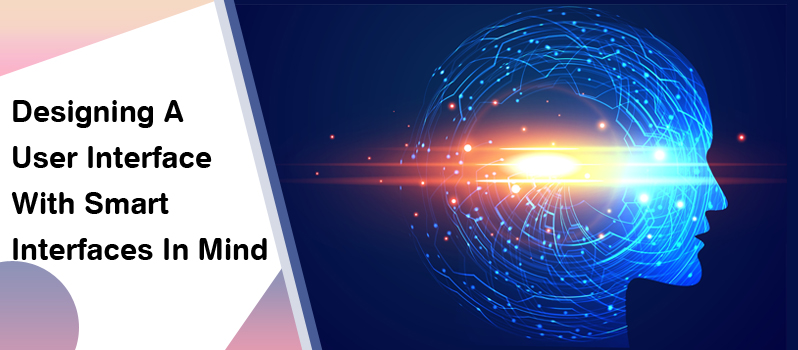Smart interfaces are becoming the norm in websites and software. The term “smart” is often associated with technology, but smart interfaces can also be created for any type of design project, including print publications and marketing materials. In this article, you will find out how to design a User Interface that is easy-to-use and accessible.
What are Smart Interfaces?
Smart interfaces are a recent trend in user interface design. They allow for users to control devices and apps through natural language commands and gestures. They also allow for more intuitive and efficient use of digital devices.
How Do Smart Interfaces Work?
Smart interfaces work by tracking user interactions with the device. This data is then used to automatically generate commands and stimuli that will correspond with the user’s current action. For example, if the user is scrolling through a list of items, the smart interface might suggest commands such as “Select an item.”
What Benefits Does a Smart Interface Offer?
A smart interface can offer several benefits to users. For example, they can be more efficient and easier to use. Smart interfaces can also help users learn new information faster since they can access it quickly and easily without having to remember multiple steps or menus. Additionally, smart interfaces can improve safety by helping people stay safe while using devices. For example, a smart interface could warn users if they are reaching their personal safety limit or if they are about to take an unsafe action.
How Can You Design A Smart Interface?
There are several ways you can design a smart interface. One approach is to use natural language processing (NLP ).
Smart Interface Design Patterns
One trend in interface design is to use smart interfaces. These are interfaces that take into account the user’s current context and use that information to personalize the interface for them.
One way to create a smart interface is to use context-sensitive help. When the user is viewing a new screen, for example, context-sensitive help will appear showing the basic operations for that screen. Similarly, if the user is viewing a list of items and needs to select one, context-sensitive help will show them how to do that.
Another way to create a smart interface is to use natural language processing (NLP). NLP can identify the user’s intent and then provide results based on that intent. For example, if the user asks for weather information, NLP could look at the location where they are and provide local weather information instead of bringing up a generic search page.
Both of these methods require some kind of data processing on behalf of the interface. If the data processing is done correctly, it can result in an extremely personalized experience. However, if it’s done incorrectly, it can lead to frustration on behalf of the user. It’s important to carefully consider how data processing will be used in order to create a well-functioning interface. There are many other considerations when it comes to designing an effective voice search interface. In this article, we’ve discussed how to develop successful voice interfaces that help users find the information they need or provide them with the information they want. If you’d like to create a great voice search experience for your app, do some research and consider these points when building the user experience for your service:
Examples of Smart Interfaces
Smart interfaces are becoming more and more prevalent in the world of design. They allow for a more seamless user experience, as well as the potential for greater efficiency in operation. While there are many different types of smart interfaces, some common examples include voice commands and touch screen interactions.
When designing a smart interface, it’s important to keep in mind the user’s needs. For example, a voice-controlled system should be easy to use, while a touch-screen interface should be responsive and comfortable. In addition, it’s important to consider the environment in which the smart interface will be used. For example, a smart interface that operates using hand gestures might work better in an environment with limited space.
While there are many different types of smart interfaces, one of the most common is touch screen interaction. Touch screens make it easy for users to interact with a system using their hands; this is especially useful for devices that are used outdoors or in environments where hands-on interaction is desired. Plus, touch screens provide a smooth and intuitive user experience that can be difficult to replicate with other forms of input.
One way to add touch screen functionality to your website or web application is to use a touch-enabled browser. For example, the Firefox Web browser is bundled with a touch-enabled interface that allows users to interact with web applications by simply touching the screen. Mobile phones are also currently becoming more and more popular as devices on which to run mobile applications. Touch screens have also become an essential part of modern cars, allowing users to interact with their surroundings in ways that would otherwise be impossible or impractical. Figure 10-4 shows a picture of a Tesla car equipped with an iPhone for navigation and audio entertainment.
Creating a Smart Interface
Creating a smart interface is all about making your users feel like they are in control of their experience. By implementing intuitive design principles and using best practices, you can create an interface that is easy to use and helps your users achieve their goals.
In this blog post, we will be discussing some of the key elements that make up a smart interface, as well as some tips for designing one. We will also discuss the importance of user feedback when designing a smart interface, and how to ensure that your users have the best possible experience when using it.
User Interface Elements
When designing a smart interface, it is important to focus on the user experience first and foremost. This means ensuring that all of the elements of the interface work together to help your users achieve their goals. Some of the key user interface elements that you should pay attention to include:
Information Architecture : It is important to establish an effective information architecture so that your users can find what they are looking for quickly and easily. This includes taking into account the layout of your menus, navigation bars, and screens, as well as labeling elements accordingly.
Conclusion
In this article, we will be discussing how to design a user interface with Smart Interfaces in mind. By doing so, we hope to help you avoid common mistakes and create an interface that is both user-friendly and effective. We will be using the KISS principle as our guide, which stands for “Keep It Simple, Stupid.” By following these simple guidelines, hopefully you will be able to create an interface that meets the needs of your users and looks good while doing so.

